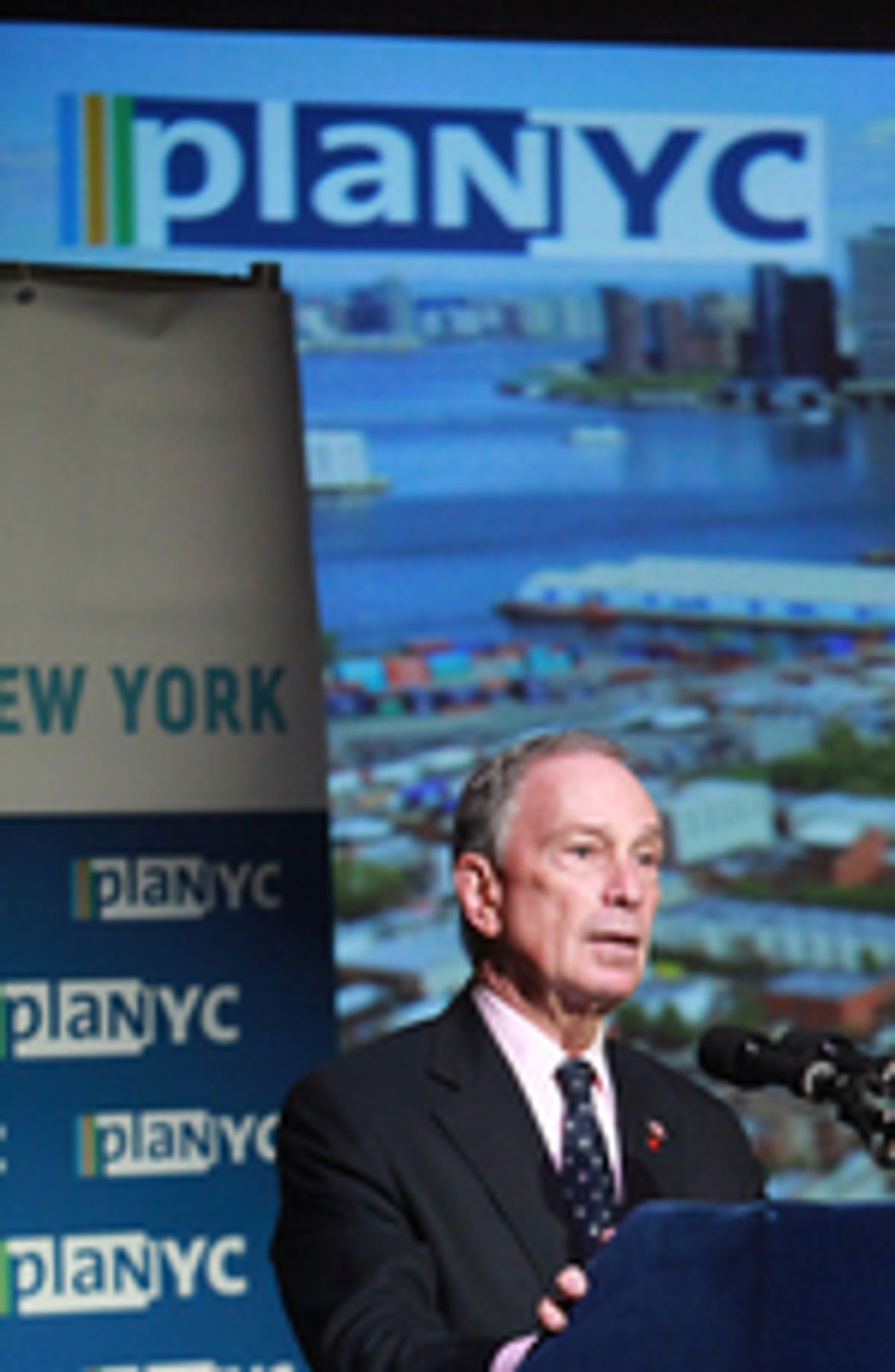Electrical engineer Michael Bloomberg, better known as the founder of Bloomberg Plc and the mayor of New York City, today issued an update of the city's plaNYC--the program for a "greener, greater New York" that it first released on Earth Day (April 22) 2007. In a press event that was a bit long on high fashionability and hero worship and a little short on vision, the mayor sent a message that despite some setbacks and currently adverse circumstances, the city will continue to work steady to use energy more efficiently and more frugally, and to obtain it increasingly from low-carbon generating sources.
The revised program, dubbed plaNYC 2.0, contains no dramatic new initiatives and in some ways disappoints. Even though the city's residents have been sorting and recycling trash for decades, New York still will not require businesses to do the same; instead it will study the subject. Despite some trial balloons lofted earlier this year, the city will not after all try to build a network of waste-to-energy conversion plants, a concept that has foundered on wide neighborhood opposition before. And though New York state's governor has called for closure of the aging Indian Point nuclear power plant, upriver from the city, Bloomberg's city government continues to insist it's needed. Replacing it would cost more than $2 billion and result in electricity bills rising at least 15 percent, the report says; without Indian Point, the city would not be able to meet its goal of reducing greenhouse gas emissions 15 percent by 2030, the report continues.
When it's come to green initiatives in the past, the mayor has taken some lickings, as he reminded his audience this morning. His aggressive push to introduce congestion pricing on cars in Manhattan, on the model of London's system, was rebuffed. So too was his attempt to require all taxis to be hybrids. All things considered, he can be forgiven for thinking somewhat smaller now, and he deserves credit for basically sticking to his guns.
Somewhat oddly, neither the report nor the mayor claims credit for some things the city could boast about: leading all the world's cities, for example, in the number of hybrid-electric buses it has put into service--not to mention the large fraction of its buses that run on compressed natural gas; taking a lead, too, in introducing charging infrastructure for electric vehicles. Instead, the report tends to focus on green initiatives of the traditional kind--parks, playgrounds, waterfront improvements, and reclamation of "brownfields"--areas where it has much to brag about indeed, but which have little to do with energy and climate as such.
One modest energy initiative the mayor highlighted, with support from the Environmental Defense Fund's Fred Krupp, is a phase-out of the dirtier heating oils. Bloomberg and Krupp said that continued burning of #4 and #6 oil by just a few thousand buildings produces more soot than all the automobiles and trucks in the city combined. Bloomberg's new rules will phase out use of #6 by 2015 and #4 by 2030.
To meet its goal of cutting carbon emissions 30 percent by 2030, the lion's share of the reductions are to come from making buildings more efficient. PlaNYC cites estimates that by the 2020s there could be twice as many very hot days as now, and by the 2050s three times as many; sea levels around New York could be as much as 30 centimeters higher by the middle of the century, and the "hundred year flood," instead of occurring every hundred years, might happen every 45.



